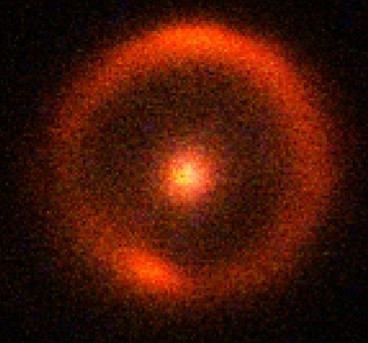Astronomers Discover Galaxy 10 Billion Light Years Away

Astronomers from the Massachusetts Institute of Technology (MIT), the University of Groningen and the Netherlands Institute for Radio Astronomy have discovered a dark dwarf galaxy, using the Keck-II Telescope in Hawaii. The galaxy is 10 billion light years from Earth and acts like a satellite; it clings to the edges of a larger galaxy.
The galaxy was discovered using a method called gravitational lensing. This method studies light from distant and brighter galaxies, which is deflected by a closer planet (the planet comes in-between the distant galaxy and Earth) thereby causing a sudden dip and dim in the light. Scientists can, by analysing the patterns of light rays deflected, determine if it is a planet or a satellite galaxy or a black hole.
According to the astronomers, dark matter should comprise about 25 percent of the universe. However, it is impossible to detect dark matter because it doesn't absorb or emit light. They also said the Milky Way should have about 10,000 satellite galaxies, of which only 30 have been observed.
"It's really exciting that we not only have a method in hand to test predictions from the cold dark matter model but also made a discovery of such a low mass dark satellite hundreds of times farther out in the universe compared to our local group of galaxies," said Professor Leon Koopmans of the University of Groningen in the Netherland.
"Now we have one dark satellite, but suppose that we don't find enough of them - then we will have to change the properties of dark matter," said Simona Vegetti, a Pappalardo Fellow in MIT's Department of Physics, "Or, we might find as many satellites as we see in the simulations, and that will tell us that dark matter has the properties we think it has."
© Copyright IBTimes 2025. All rights reserved.





















